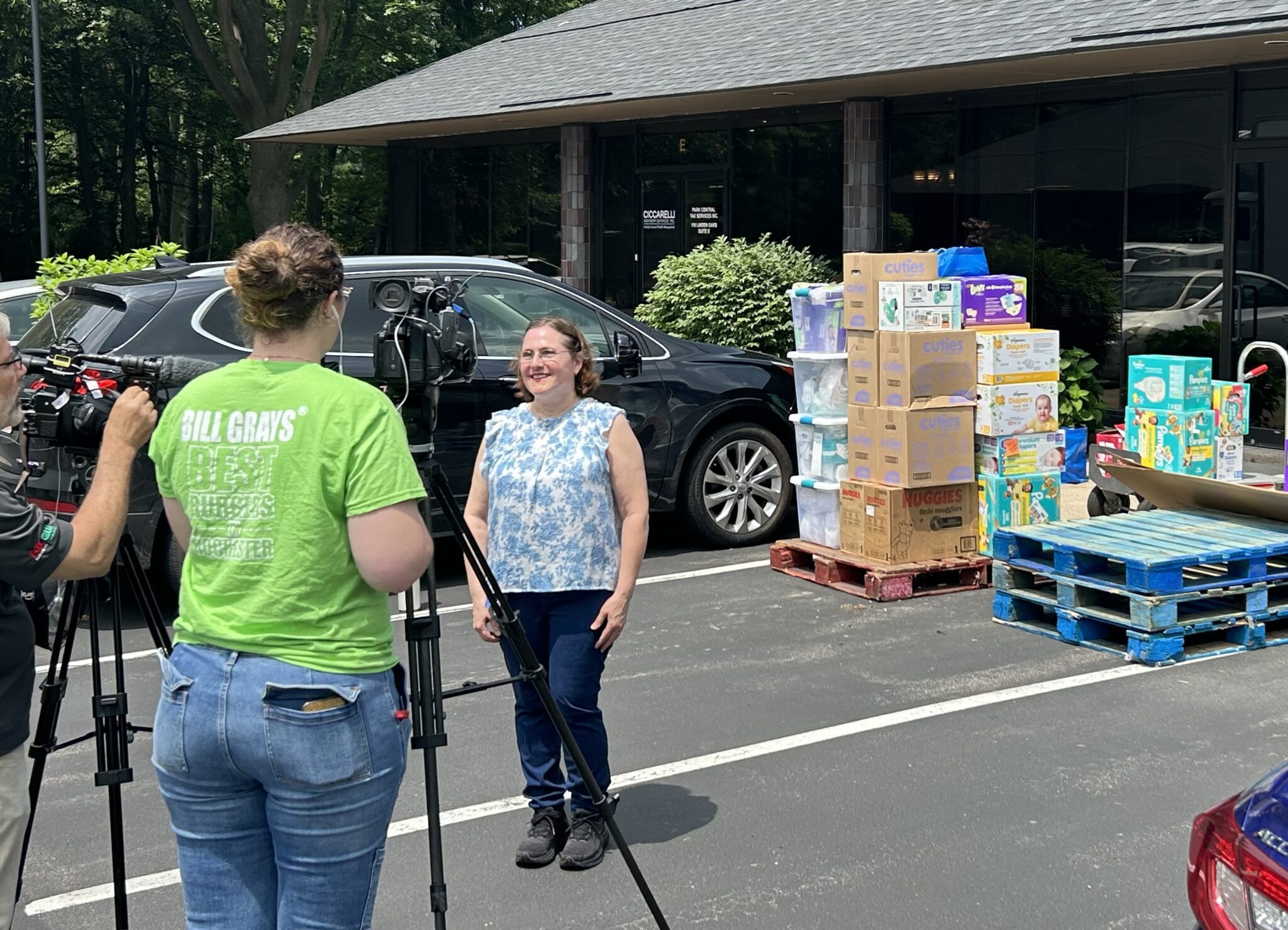The number of people without enough food over one seven-day period spiked by 35 percent in New York State, and 30 percent nationwide between October of 2021 and October of 2022, according to a report by the nonprofit group Hunger Free America, based on an analysis of federal data.
The report was released Wednesday at a press conference with Congressman Joe Morelle, Hunger Free America CEO Joel Berg, County Executive Adam Bello, Julia Tedesco, President & CEO of Foodlink, and Maribeth Weed, Pantry Administrator of Community Food Cupboard.
Over that year, the number of people without enough food increased from 1,171,123 to 1,576,641 in New York, and from 19.9 million to 25.7 million nationwide.
Hunger Free America attributes the surge in food insecurity to the expiration of the expanded Child Tax Credit and universal school meals, coupled with the impact of inflation. Many federal benefit increases have either gone away entirely, or are being ramped down, even as prices for food, rent, healthcare, and fuel continue to soar.
“Effective federal public policies over the previous few years were spectacularly successful in stemming U.S. hunger, but as many of those policies have been reversed, hunger has again soared,” said Joel Berg, CEO of Hunger Free America. “At exactly the moment when so many Americans are in desperate need of relief, many of the federally funded benefits increases, such as the Child Tax Credit and universal school meals, have expired, due mostly to opposition from conservatives in Congress. While increases in food and cash assistance were far greater than the increases in food prices, leaving the vast majority of Americans in far better condition than they would have been without this extra aid, hunger and food insecurity rates continue to soar in all fifty states, especially among working people, children, and seniors. We desperately need the upcoming lame duck session of Congress to address this crisis.”
According to the USDA food insecurity data – a different way of measuring food hardship analyzed by Hunger Free America – across New York State, 10.9% of residents, or 2.1 million people, lived in food insecure households from 2019-2021. This includes 14.7% of children in the state (582,729), 7.8% of employed adults (695,946), and 7.1% of older New York State residents (338,926).
“The new NYS report from Hunger Free America illustrates the undeniable connection between public policy and a household’s ability to put food on the table,” said Julia Tedesco, President & CEO of Foodlink. “It further proves the long-held belief among anti-hunger advocates that our nation’s startlingly high food insecurity rates are, in fact, a political decision – not a fact of life. We look forward to working with our local, state and federal officials in mapping out realistic solutions to reducing poverty and food insecurity for thousands of families in our region.”
Other findings of the study:
- The Northeast Region’s Consumer Price Index increased by 8.2% between June 2021 and October 2022. The percent of individuals without enough to eat in New York state is now back to April 2020 levels, when the US was still in the early stages of the COVID-19 pandemic.
- Nationally, 11.0% of Americans were found to live in food insecure households between 2019 and 2021. According to USDA data, the states with the highest rates of food insecure individuals from 2019-2021 were Texas (16.8%), Mississippi (15.6%), Oklahoma (15.3%), Louisiana (14.8%), and Arkansas (14.3%).
- 5% of children in the U.S. lived in food insecure households in the 2019-2021 time period. The states with the highest rates of food insecure children were Delaware (20.2%), Mississippi (19.0%), Oklahoma (18.9%), Michigan (18.6%), and Louisiana (18.2%).
- Nationally, 8.2% of employed adults in the U.S. lived in food insecure households during the three-year time period (table 3). The states with the highest rates of food insecurity among employed adults were Arkansas (11.9%), Delaware (11.4%), Texas (11.3%), Louisiana (11.2%), and Oklahoma (11.2%).
- In the U.S., 7.0% of older Americans, defined as people 60 years and older, lived in food insecure households (table 4). Mississippi had the highest rate of food insecurity among older Americans at 12.6%, followed by Louisiana (12.3%), District of Columbia (11.5%), Oklahoma (9.6%), and South Carolina (9.6%).
- Nearly three-fourths of respondents to our New York food pantry and soup kitchen survey (73.1%) said they served more people in 2022 than in 2021.
“Tomorrow, we celebrate Thanksgiving. For some it will be filled with extravagant meals—but for millions of families here in New York and across the country, it will be yet another day that they go hungry,” said Congressman Joe Morelle. “This is a critical time to reflect on our national hunger crisis and recommit to enacting policies that will reduce food insecurity and uplift families. I’m grateful to Hunger Free America for their partnership and advocacy, and I look forward to our continued work together to end hunger and ensure no one is left behind.”
The report includes detailed public policy recommendations at the federal level, state, and city level, including passage of the Child Nutrition Reauthorization Bill and the HOPE Act of 2021, reauthorization of the Child Tax Credit, which raised millions of families out of poverty, and making permanent the pandemic-era improvements in SNAP access for college students.
“The results of the survey issued by Hunger Free America show an increased rate of food insecurity and hunger in Monroe County and across New York State. We know our food pantries and soup kitchens are struggling to meet increased demand,” said County Executive Adam Bello. “The sunset of pandemic benefits coupled with the increased cost of groceries are putting a strain on our families. We need more members of Congress like Joe Morelle, fighting for federal dollars to end hunger and support Foodlink, our local food bank, and the community partners that distribute food during the holidays and all year long.”
The full report, “Emptier Plates: Hunger Reduction Advances Eaten Up by Aid Cuts and Inflation,” is available on Hunger Free America’s website: https://www.hungerfreeamerica.org/en-us/research/2022-annual-survey-report






